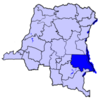William J. Malecela
R I P
- Apr 27, 2006
- 26,588
- 10,375
- Thread starter
- #1,041
Mkuu Kichguu,
Ubarikiwe sana na hiki kipande, kumbe na wewe ni muziki unapanda? Duh! labda sasa tuanzishe JF jazz, bwa! ha! ha! ha! tupo ukurasa mmoja hapo mkuu!
Ubarikiwe sana na hiki kipande, kumbe na wewe ni muziki unapanda? Duh! labda sasa tuanzishe JF jazz, bwa! ha! ha! ha! tupo ukurasa mmoja hapo mkuu!
